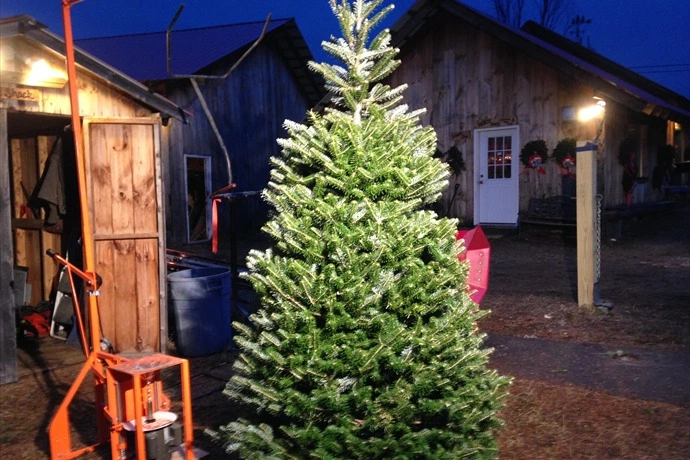USDA Forest Service officials in Vermont are welcoming the public to select and cut a Christmas tree on the Green Mountain National Forest (GMNF) with the purchase of a $5 permit. For the first time, permits will now be available for purchase either online (an additional $2.50 service fee applies) or in-person at a GMNF office. In support of the Every Kid Outdoors initiative, this year the Forest Service will provide all fourth and fifth grade students with a free Christmas tree voucher by registering here: everykidoutdoors.gov. Fourth and fifth graders who register must present a printed voucher to redeem a Christmas tree permit. Christmas trees for personal use may be cut on the GMNF, subject to the following conditions:
Fees and availability
Permits can be purchased either online or in-person at a GMNF office.
Purchasing permits in-person can be done by calling one of their offices located in Manchester, Rochester and Rutland, Vermont. Due to the ongoing COVID-19 pandemic, please confirm that their office locations are open by making an appointment prior to travel. Permit cost is $5 and is non-refundable. Online permits require an additional $2.50 service fee. Only one permit issued per household per year. Trees obtained under the Christmas tree permit may not be resold.
Rules for harvesting
Trees may only be cut within designated areas as indicated in maps. Trees over 20 feet tall are not covered by the permit. The tree must be cut at a point no higher than 6 inches off the ground. Permit holders must remove all trash and litter resulting from their activities. This includes removing all woody debris from road surfaces, ditches, and culvert openings where cutting took place.
Permit conditions
Permit is not valid in: Congressionally-designated wilderness areas; active timber sale areas; and developed recreation sites including campgrounds, picnic areas, and day use sites; and the following management areas as designated by the 2006 Forest Plan: Ecological Special Areas, Existing and Candidate Research Natural Areas, Alpine / Subalpine Special Areas, and the Robert Frost Recreation Special Area.
Permit must be attached to the tree before transporting it from the site where it was cut.
Planning your trip
Before you leave home, be sure to measure the space where you plan to place the tree in your home (height and width) and measure the space in your vehicle where you will be transporting the tree.
Cell service may be spotty or unavailable. Be sure someone knows where you are and when to expect you back.
Check the latest weather conditions, forest warnings and road closures before you leave on your trip.
Bring a map with you. Don’t rely on GPS because it may not be up to date with Forest Service roads. Roads may not be plowed. Carry tire chains, shovel(s) and a tow chain. Be sure your vehicle has a full tank of gas. Bring a spare key and give it to someone else in your party. Don’t get locked out of your car. Park in areas so that traffic can get by safely, and do not block gates.
Dress warmly and take extra dry clothes. Expect winter weather, including cold temperatures, snow and winds.
Start your day early. Be sure to find your tree and leave the woods before dark.
Helpful cutting tips
Carry your tree carefully out of the woods. Dragging the tree will rub off needles and bark.
If the tree is too big to transport inside of your vehicle, wrap it in canvas to prevent wind damage.
Once home, cut the bottom of the trunk off and place the freshly cut trunk in a bucket of water. Replenish water.
If storing your tree outside for a few days before putting it in the house, keep it in an area protected from the wind, such as the north or east side of your house or under a shaded tree.
Tools you might want to consider bringing with you include a measuring tape to ensure you select a tree that fits in your home; handsaw to cut your tree; gloves to protect your hands; boots to protect your feet; a tarp to sit on and / or to move your tree once it’s cut; and rope or straps to secure your tree to your vehicle.
Choose a tree from a dense forested area, which will give the remaining trees more space to grow.
Cut the leftover branches from the stump and scatter them.
USDA service offices in Vermont
Rutland Forest Supervisor’s Office: 231 North Main St., Rutland; 802-747-6700
Manchester Ranger Station: 2538 Depot St., Manchester Center; 802-362-2307
Rochester Ranger Station: 99 Ranger Road, Rochester; 802-767-4261




